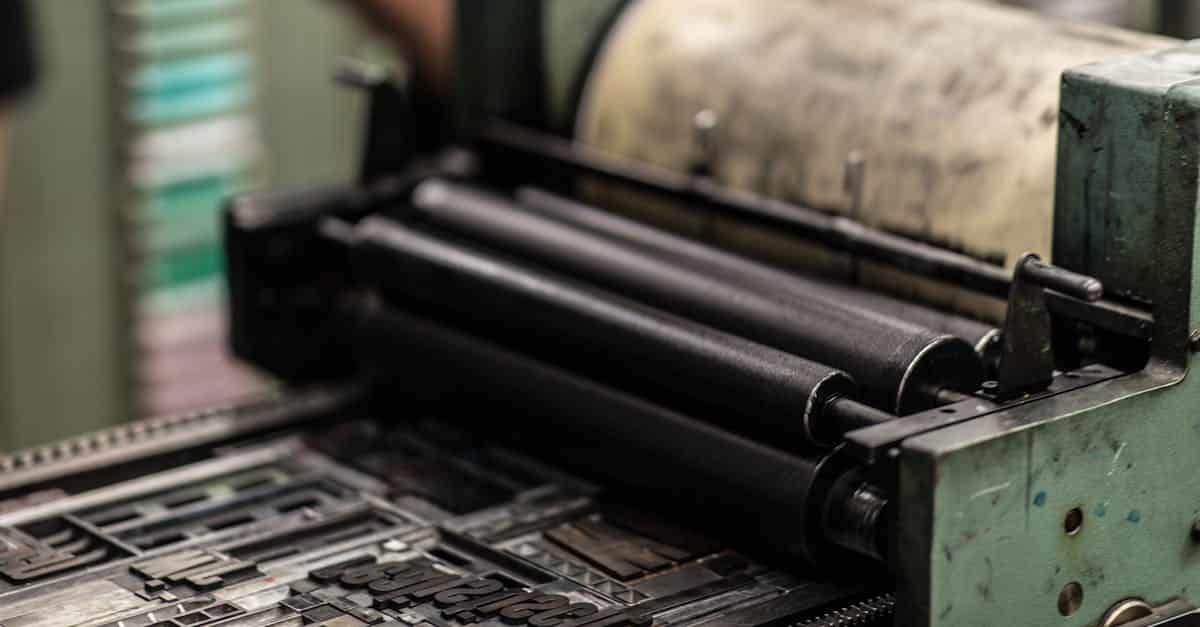“`html
For thousands of years, humans have shaped glass, transforming an ancient material into works of art and functional objects.
Today, this age-old tradition meets the cutting-edge technologies of the 21st century.
Imagine a world where glass can be printed in three dimensions with microscopic precision.
This dream is becoming reality thanks to the STELLAR project, funded by the National Science Foundation. Led by researchers at the University of Utah, this innovative project aims to revolutionize 3D printing of glass. By using ultrafast lasers, scientists hope to create glass structures with details as fine as a micrometer. This advancement will far surpass current capabilities, enabling sophisticated applications in the fields of optics and sensors. Collaborating with University of Galway and Queen’s University Belfast, the project is benefiting from $1.4 million in funding. The ultimate goal is to give rise to technologies capable of transforming light and opening new scientific perspectives.
Table of Contents
Togglehow does traditional 3d printing work with glass?
For thousands of years, humans have worked with glass, a material with unique properties both mechanically and optically. However, integrating glass into modern 3D printing technologies poses significant challenges. Traditionally, 3D printing uses materials like plastic, metal, or resin, which can be easily melted and extruded into thin layers to create complex objects. The process often relies on thermal melting or polymerization of liquid materials, which then solidify to form the desired structure.
With glass, things become more complicated due to its high melting point and disordered internal structure. Traditional 3D printing techniques, such as fused deposition modeling or stereolithography, are not directly applicable to glass. Current printers adapted for glass are generally limited to creating large, decorative objects without the precision needed for advanced scientific or industrial applications.
To overcome these obstacles, researchers are turning to more innovative methods, seeking to adapt the principles of additive printing to the unique nature of glass. This involves not only the development of new melting and shaping technologies but also a deep understanding of the properties of glass at the microscopic level. Projects like STEM demonstrate that there is a growing interest in exploring these possibilities, offering workshops and resources for those wishing to delve into the field of 3D printing with advanced materials.
what are the challenges of 3d printing with glass?
Integrating glass into 3D printing presents several major challenges. First, glass has a high melting temperature, often well beyond what standard 3D printers can achieve. This necessitates the development of specialized heating systems capable of maintaining constant, sufficiently high temperatures to liquefy glass without altering its structural properties.
Second, the internal structure of glass is amorphous, which complicates its controlled solidification. Unlike metals or plastics, glass does not crystallize uniformly, which can lead to defects and irregularities in printed objects. Ensuring uniformity and accuracy in shaping glass is essential for applications requiring high optical or mechanical quality.
Another challenge lies in the manipulation of thin layers of glass. Traditional 3D printers operate by adding successive layers of material, but with glass, each layer must be carefully controlled to avoid internal stresses and cracks. This requires advanced deposition technologies and precise cooling systems to manage the transition of glass from a liquid to a solid state.
Finally, the safety issues associated with handling high-temperature materials cannot be ignored. Laboratories and production facilities must be equipped with adequate safety devices to protect operators and ensure safe working conditions. Despite these challenges, ongoing technological advancements and research projects promise to overcome these obstacles, paving the way for a new era of creativity and innovation in glass 3D printing.
what recent advancements enable the integration of glass in 3d?
Recent advancements in the field of glass 3D printing are primarily attributable to innovative research and projects funded by renowned institutions. One of the flagship projects is STELLAR (Scalable low temperature ultrafast laser materials manufacturing), funded by the National Science Foundation. Led by the University of Utah in collaboration with the University of Galway and Queen’s University Belfast, this project aims to develop a glass 3D printing system capable of creating features as small as 1 micrometer on centimeter-sized surfaces.
Researchers Berardi Sensale-Rodriguez and Rajesh Menon, professors of electrical and computer engineering, have developed technology using ultrafast lasers. These lasers, capable of turning on and off in a fraction of a second, allow unprecedented control over the melting and solidification of glass. By increasing the speed and precision of the laser, the STELLAR project surpasses the capabilities of current printers, which are limited by resolution and the energy used.
Another significant advancement is the adoption of bottom-up approaches in additive manufacturing. Unlike traditional “top-down” techniques that start from a block of glass and grind it down to the desired shape, “bottom-up” methods build the object layer by layer from small glass particles, offering greater flexibility and precision in shaping complex structures.
Moreover, the use of advanced computer simulations and modeling allows researchers to predict and optimize the properties of glass during the printing process. These digital tools are essential for real-time adjustments of printing parameters, ensuring optimal quality and consistency of the produced objects. These technological innovations open new perspectives for the integration of glass in 3D printing, making this once challenging material more accessible for various industrial and scientific applications.
what are the potential applications for glass 3d printing?
The integration of glass in 3D printing opens up a wide range of potential applications, from the optical industry to advanced technologies. One of the most promising uses is in the field of optical sensors and advanced detection devices. By sculpting glass at the microscopic scale, it becomes possible to create sophisticated optical components capable of manipulating light with exceptional precision. These sensors can be used in various applications, such as the detection of chemical substances, monitoring microorganisms, or analyzing complex surface structures.
Nanosatellite telescopes constitute another innovative application. 3D printed glass lenses can offer superior optical quality, essential for observing and gathering data from space. These precise components allow for capturing detailed images and vital scientific data, thus contributing to advancements in astronomy and space exploration.
In the field of architecture and design, glass 3D printing enables the creation of complex and aesthetic structures that would be difficult to achieve through traditional methods. Designers can explore new shapes and textures, integrating functional elements such as built-in lighting or ventilation systems through the printed glass.
Finally, the medical sector could benefit from this technology through the manufacturing of customized medical devices. Glass implants, precision surgical instruments, or advanced diagnostic devices are examples of where glass 3D printing could transform medical practices, offering tailored solutions to the specific needs of patients.
To learn more about 3D printing applications in various fields, check out this resource, which explores profitable business ideas and emerging career opportunities by 2025.
how could glass 3d printing transform the industry?
Glass 3D printing has the potential to revolutionize several industries by providing faster, more precise, and more customized solutions than traditional manufacturing methods. In the optical technology industry, for example, the ability to produce high-precision glass components enables the development of more efficient and compact optical devices. This could lead to significant improvements in telecommunications, augmented reality and virtual reality systems, as well as medical imaging equipment.
The construction sector could also benefit from glass 3D printing, particularly in the manufacturing of innovative architectural glazing. These glazings can offer advanced functional properties, such as light regulation, improved thermal insulation, or unique aesthetic features. Architects and designers could thus create more sustainable and aesthetically remarkable buildings, better meeting modern requirements for eco-design and energy performance.
In the field of aerospace, glass 3D printing could contribute to the manufacturing of lightweight and durable components for satellites and spacecraft. The precision and quality of glass-printed objects allow for the development of more reliable measurement and communication instruments, essential for long-duration space missions.
Additionally, the medical industry could see major advancements through the customization of medical devices. The ability to create tailor-made glass implants that are perfectly suited to each patient’s morphology offers promising prospects for reconstructive surgery and diagnostic devices.
Finally, education and scientific research also benefit from glass 3D printing. Research laboratories can use these technologies to create customized equipment tailored to specific experiments. Additionally, educational institutions can integrate glass 3D printing into their curricula, providing students with advanced skills relevant to the job market of tomorrow.
To discover how to transform your passion into a business through 3D printing, check out this career opportunity, which explores different paths to launching an innovative business in the 3D printing sector.
what are the future prospects for glass 3d printing?
The future prospects for glass 3D printing are extremely promising, with a potential for innovation and expansion across many fields. As technology progresses, we can expect a decrease in costs and an increase in accessibility of 3D printers capable of working with glass. This would pave the way for broader adoption in industrial, commercial, and even domestic sectors.
Researchers continue to explore new techniques to improve the accuracy and durability of printed glass objects. The integration of composite materials or additional layers to reinforce glass structures could allow for the creation of more robust and functional products. Additionally, advancements in 3D modeling software and printer control algorithms will facilitate the design and manufacturing of complex structures, making glass 3D printing more flexible and adaptable.
Another emerging trend is the combination of glass 3D printing with other additive manufacturing technologies. For example, integrating printed electronics or embedded circuits directly into glass objects could create new types of smart devices, merging the benefits of glass with those of advanced electronics.
The development of specific standards and regulations for glass 3D printing will also be crucial for ensuring the safety and reliability of manufactured products. Collaborations between researchers, industries, and regulatory bodies will help define best practices and encourage the adoption of this technology in a responsible and sustainable manner.
Finally, the environmental impact of glass 3D printing will be an important aspect to consider. Additive manufacturing processes have the potential to reduce waste and minimize carbon footprints compared to traditional production methods. By optimizing material usage and integrating sustainable practices, glass 3D printing can contribute to a more environmentally friendly future.
To delve deeper into the innovative and eco-friendly solutions of 3D printing, this reading offers insights into the latest trends and innovations in the sector.
















